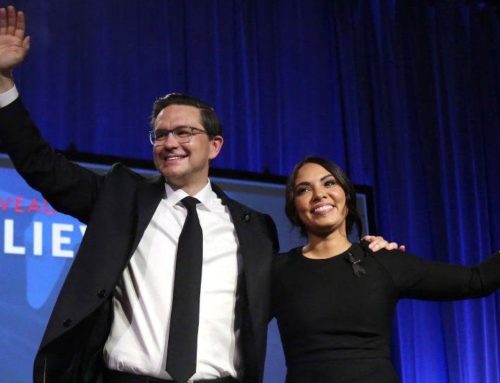Andrew Lawton:
 I didn’t coin this bit of wisdom, but it bears repeating: when voters are given the choice between a Liberal and a Liberal-adjacent, they’ll go for the real deal. Such is the most apt way of summing up 2021’s controversial election, which gave the Liberals another mandate with nearly an identical power breakdown in the House of Commons to what they had before dissolving parliament.
I didn’t coin this bit of wisdom, but it bears repeating: when voters are given the choice between a Liberal and a Liberal-adjacent, they’ll go for the real deal. Such is the most apt way of summing up 2021’s controversial election, which gave the Liberals another mandate with nearly an identical power breakdown in the House of Commons to what they had before dissolving parliament.
Conservative leader Erin O’Toole ran a steady, safe campaign, as is the Conservative instinct. Most notable is the shift between 2020 O’Toole and 2021 O’Toole. The former was running for the leadership of the Conservative Party of Canada as a “true blue conservative,” while the latter was trying to please everyone, in the process seeming, instead, to alienate everyone.
Such flips are normal, if not expected, in Canadian conservative politics, though it was a particularly informative exercise in the 2021 election. O’Toole was never a social conservative. He never pretended to be, but made a couple of clear and decisive promises during his leadership run. First, he was going to protect free votes on matters of conscience. Second, he was going to protect conscience rights for healthcare practitioners.
While most pro-life Conservative members opted for Leslyn Lewis or Derek Sloan as their first choice, O’Toole was a welcome consolation prize for them when the alternative was Peter MacKay, who had called Andrew Scheer’s social conservatism a “stinking albatross” and couldn’t lay out an unambiguous position on free votes.
As it turned out, neither could O’Toole.
Despite O’Toole’s pro-choice bona fides, the media still accused him of having a secret social conservative agenda. It didn’t matter that he was the most socially progressive leader in the party’s history – he was going to let doctors listen to their conscience, which we’re told is worthy of condemnation in 2021.
He held firm at first, but eventually relented on his own policy by affirming that if he had his druthers, doctors would have a duty to refer, which is, to many healthcare practitioners, as morally fraught as having to provide an objectionable service directly.
O’Toole also laid down the law that members of the Conservative caucus would have to agree with every single part of his platform if they wanted to remain in caucus. He never gave a clear answer when asked whether this was a reversal of his previous assurances of free votes on matters of conscience.
There were other noteworthy flip-flops and walk backs, such as on firearms and CBC funding. By the end of the campaign, the Conservative message had been reduced to “Justin Trudeau shouldn’t have called the election, so vote for us.” There wasn’t a conservative vision, or really any vision, in this, especially as desperation started to set in with a marked surge in support for the People’s Party of Canada.
The cautionary tale in it all was that the attacks hardly changed, no matter how much O’Toole worked to convince his political foes, the media, and undecided voters that he and his Conservative party were different now.
The problems this approach creates are numerous. For starters, it’s a tacit admission that there’s something wrong with the party – the one in which O’Toole served as a cabinet minister just a few years ago. It also makes those who are already in the party wonder if he’s trying to shove them out the back door to make room for his new friends on the left and centre. It’s no surprise that the PPC managed to bring in double digit numbers in some ridings, notably the strongest ridings for the CPC.
The most optimistic single-issue voters were left to cross their fingers and hope the Conservatives would make good on their promises if they managed to get elected. While I understand the appeal of having a secret agenda, if you can’t get voters to buy into your agenda, you don’t have a mandate to enact it. Conservatives need to stick to their guns (which has both literal and figurative meaning in this context) and not fold at the first sign of pressure from actors who will be against them no matter what’s in their platform.
As my friend Mark Steyn has often said, it’s easier for the base to get itself a new leader than it is for the leader to get a new base. As O’Toole navigates his place in the post-election Conservatives,




